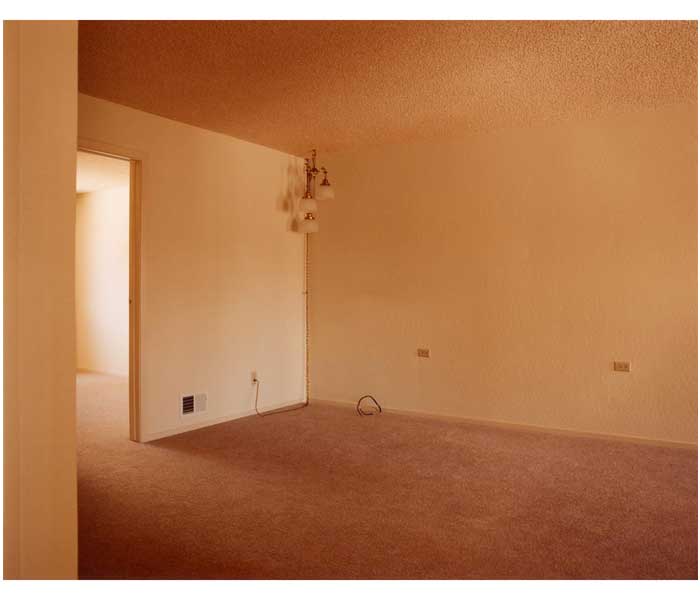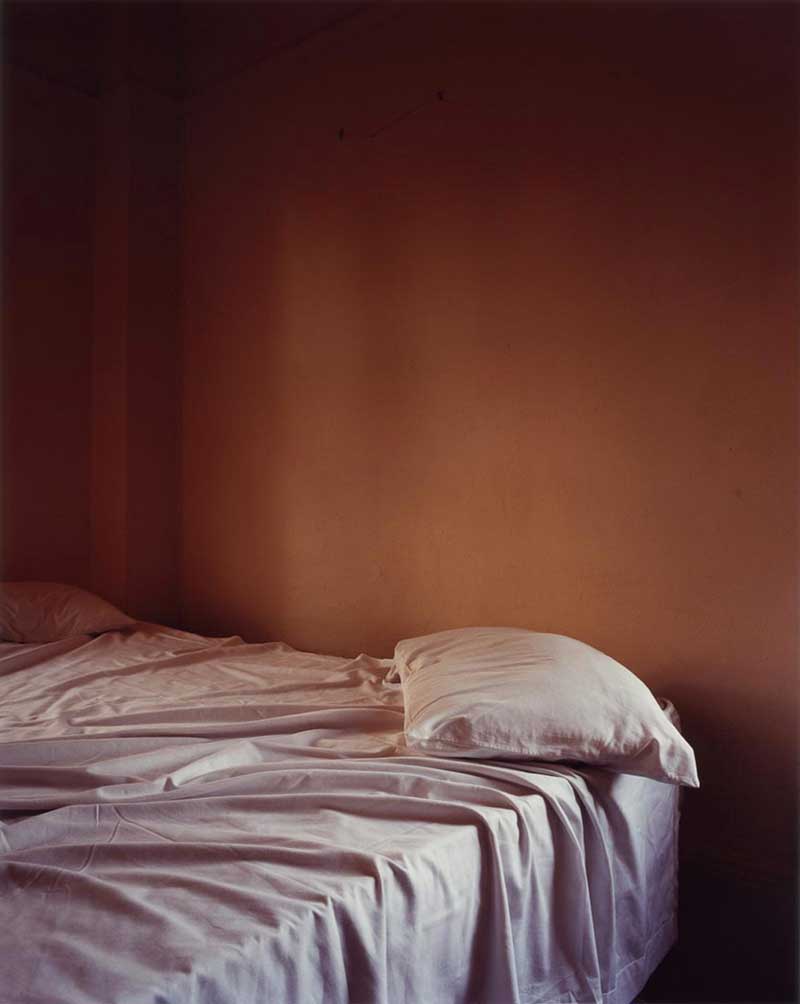As a teenager, Todd Hido would wander through his suburban neighbourhood late at night, contemplating the silent houses punctuated along empty streets. His interest in the dark and quiet homes he discovered led to the publishing of his first book in 2001, House Hunting. The book covers a collection of simple scenes, principally focussing on the glowing windows and shadowy exteriors of strangers’ living spaces. From the outside, one yearns to glimpse the everyday goings-on kept private within the homely spaces. Instead, the viewer is granted only the eerie suggestion of life through luminescent windows, suspending a tension of secretive indoor activity.
However, Hido’s photographs of interior spaces do not satiate the voyeuristic desire to peer into people’s mundane personal lives. They are equally guarded, depicting the shells of empty rooms devoid of activity. Hido’s interior photographs are characterised by a rich tonality, pastel colouration, and subtle glowing light. The spaces he captures are often completely barren bar a single piece of furniture or object, an elusive suggestion of the room’s previous occupant. #3557-y documents an unmade bed, pillow askew with sheets crumpled in a set of rippling folds. The image is defined by a narrative stillness, caught in the pregnant moment between a ‘before’ and ‘after’. As such, It is unclear whether the bed’s owner has just risen, or is about to re-enter the bed for sleep.

#1934, 1996. Todd Hido
Hido’s narrative stillness reflects the work of one of his major artistic influences, the American realist painter Edward Hopper. Likening his paintings to single film frames, Hopper’s own interior scenes reflect elliptical moments that never fully resolve themselves. Sun in an Empty Room (1963), for example, holds a sense of complexity beneath its calm surface. Eerily deserted, Hopper’s room reflects an enormous weight of psychological anxiety. Once a space designed to provide nurture and safety, the uninhabited room is now left vacant and hollow. Hopper’s empty room, composed of angular shadows and geometric sun patches, creates an atmosphere of alienation. Further, Hopper’s canvases are characterised by an unreal, paranormal light. Bearing a theatrical quality, the light beaming onto Sun in an Empty Room snatches the scene out of the domestic sphere, transforming it into a quasi-stage set.
This harsh quality of light is absent from Hido’s own interior images. Hido implements a softer light, affording his photographs the impression of palpable authenticity. For example, the image #1934 offers hints of human interference. The tangled wires, plug points, air vent, and hanging lamps exist as suggestive mementos of previous liveliness. Indeed, the static room gives off the distinctive impression that it has been lived in. This feature is relatable, inviting viewers to embroider the image with their own personal anecdotes. Moving one step beyond Hopper, Hido adapts the sensation of alienation, bringing his images tantalisingly close to reality. Appearing as freshly deserted scenes, Hido’s interiors are caught in the liminal space between action and abandon
(By Eleanor Lerman)
